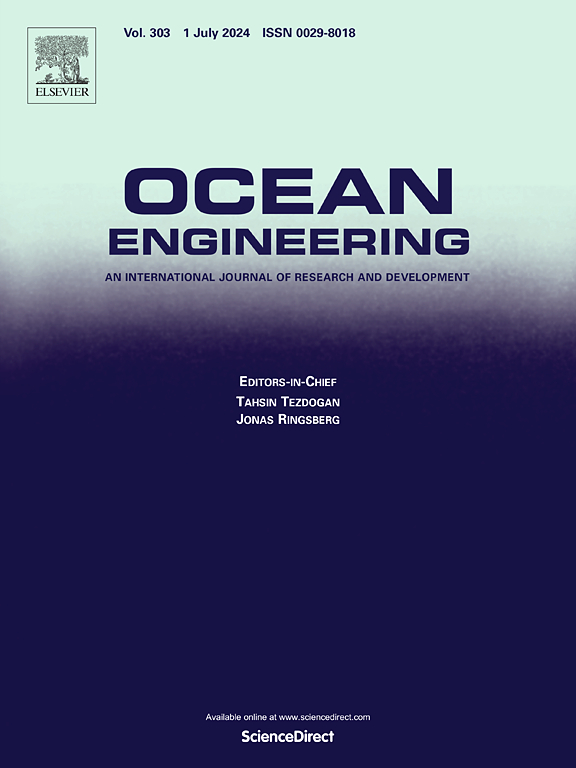Energy optimal path planning of ocean-energy driven unmanned surface vehicles
IF 4.6
2区 工程技术
Q1 ENGINEERING, CIVIL
引用次数: 0
Abstract
Ocean energy driven unmanned surface vehicles (OEDUSV) can realize long-time sea observation tasks with long endurance. Most of the studies on OEDUSV are focused on motion control problem. The path planning problem of OEDUSV has rarely been considered in published literature. To fill this research gap, the present study proposes an energy-optimal global path planning solution, which is then applied to an OEDUSV model Yulang. In order to meet the design requirements of endurance, a dynamic ocean environment model is established. The model applies a grid method and combines with a time-dependent marine environment forecast data. Based on its energy consumption and ocean energy capture model, a Dijkstra based energy optimal global path planning method is then proposed. A Theta∗ algorithm is introduced to solve the invalid turning points problem. An original visibility detection algorithm is optimized by introducing a clipping algorithm and an energy consumption function. Under static and dynamic ocean environment conditions, the performance of the energy optimal Theta∗ algorithm is compared with that of the energy optimal Dijkstra algorithm, the traditional Dijkstra algorithm and the traditional Theta∗ algorithm. The results show that the path planned by the energy-optimal Theta∗ algorithm actually consumes the lowest energy.
求助全文
约1分钟内获得全文
求助全文
来源期刊

Ocean Engineering
工程技术-工程:大洋
CiteScore
7.30
自引率
34.00%
发文量
2379
审稿时长
8.1 months
期刊介绍:
Ocean Engineering provides a medium for the publication of original research and development work in the field of ocean engineering. Ocean Engineering seeks papers in the following topics.
 求助内容:
求助内容: 应助结果提醒方式:
应助结果提醒方式:


